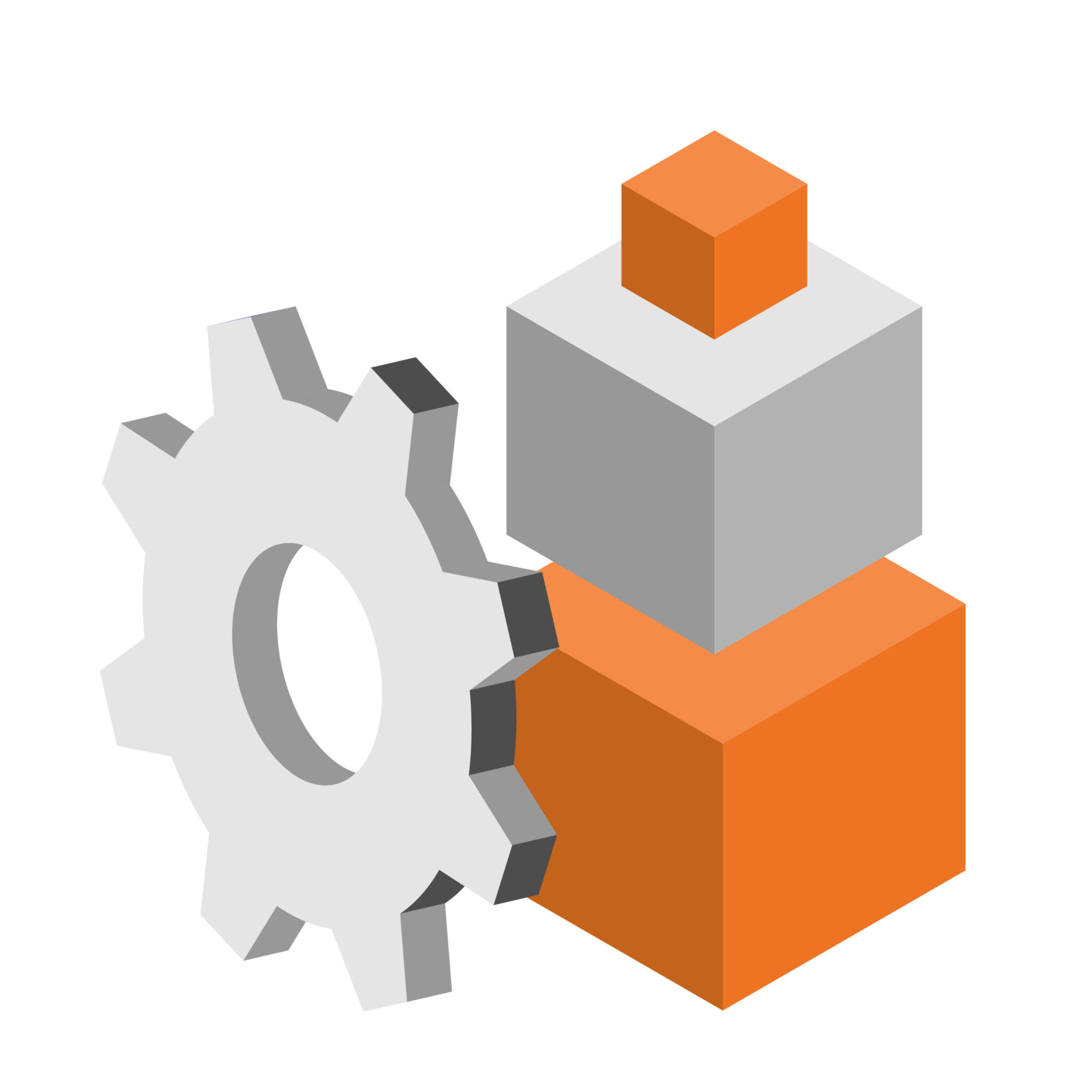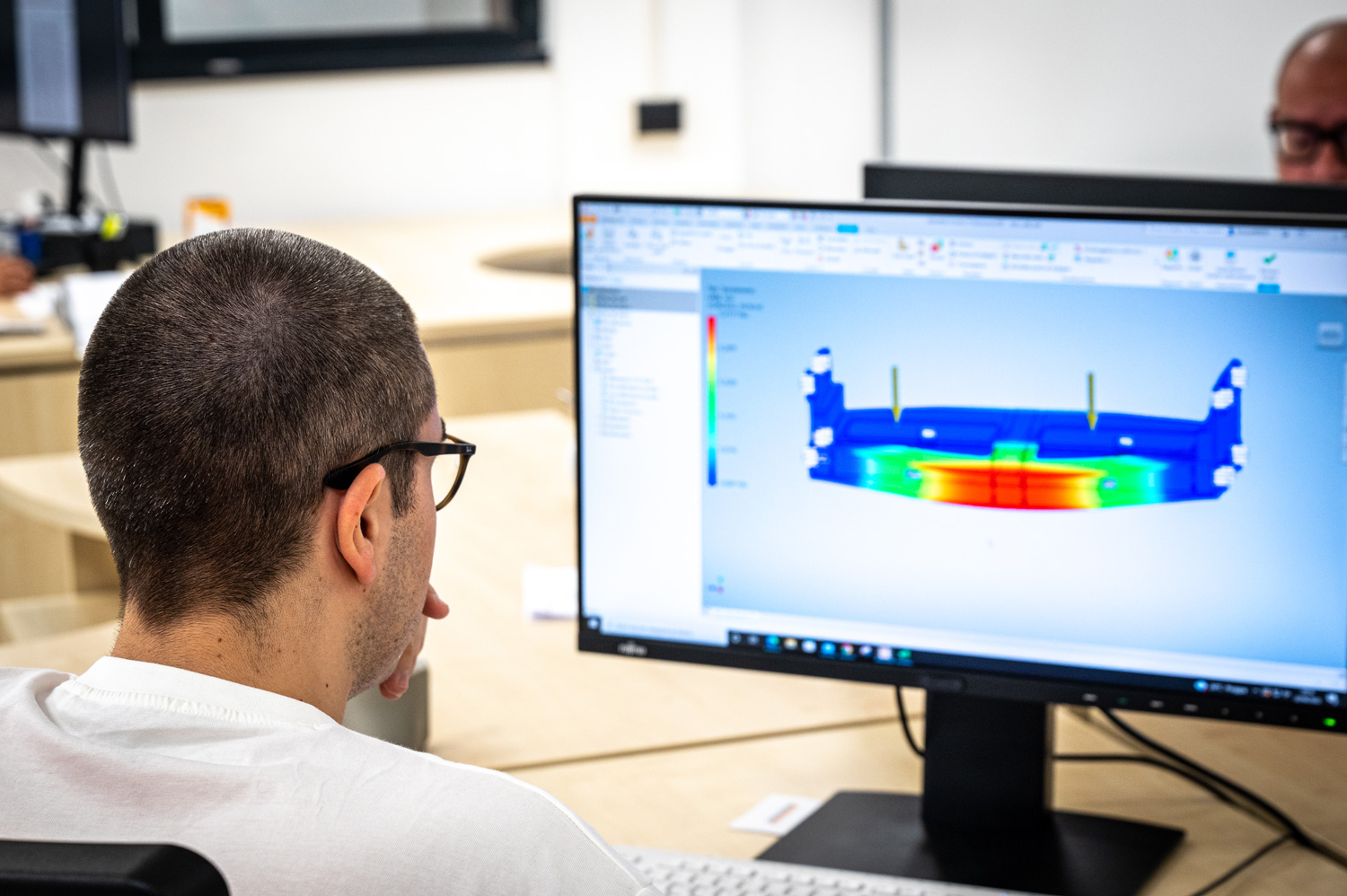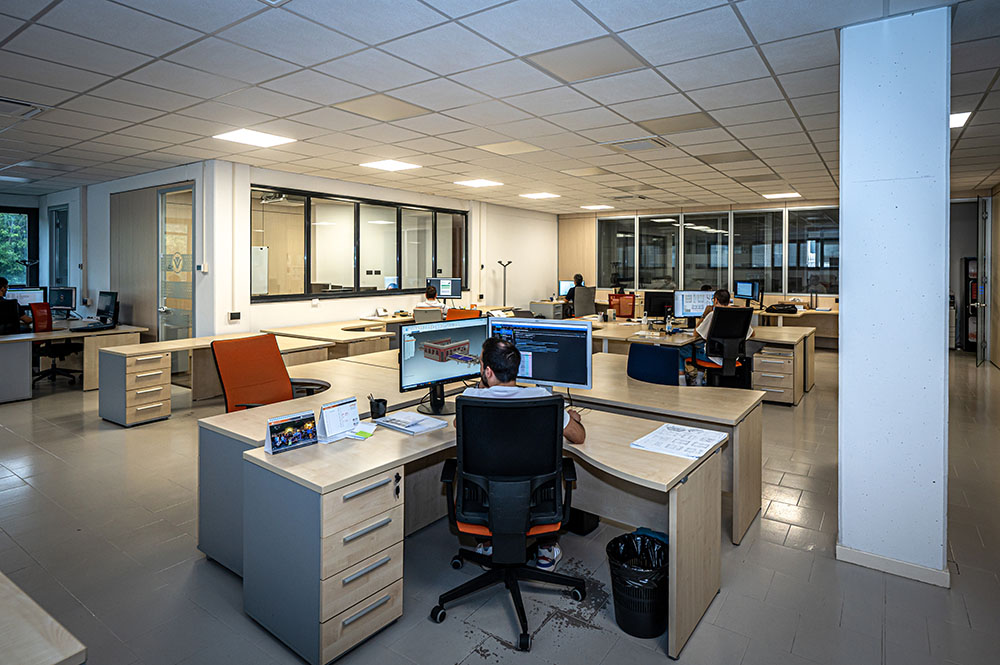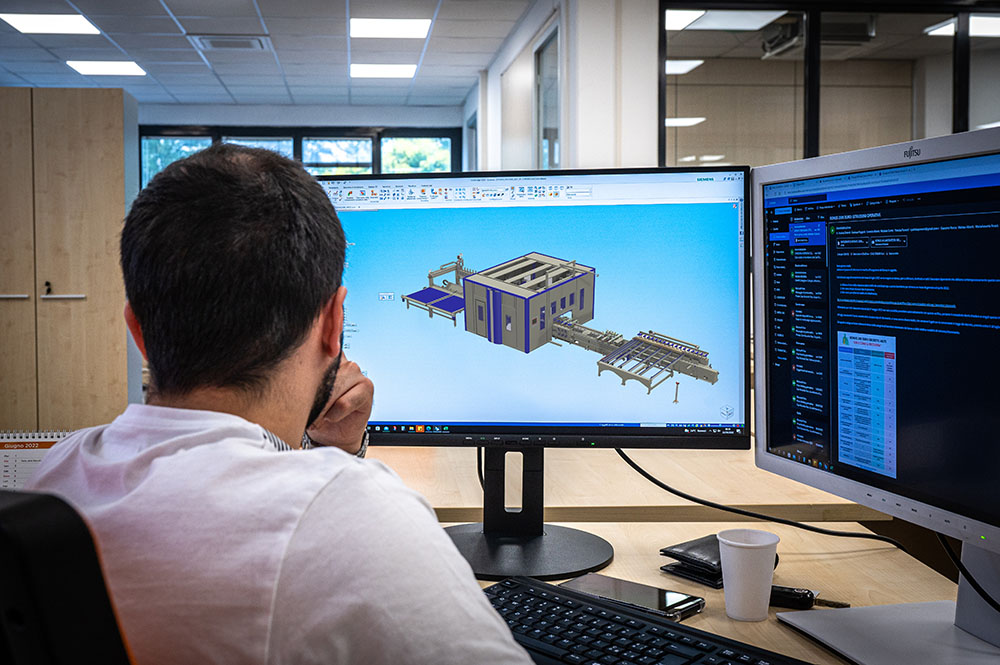SERVICE

MECHANICAL DESIGN
Bespoke engineering solutions and high-quality custom mechanical design services carefully tailored to meet your specific needs.
Our company specializes in offering customized engineering solutions and mechanical design services, with the aim of providing our customers with high quality solutions tailored to their specific needs. Our expertise in mechanical design allows us to create semi-automatic and automatic machinery, work centers and entire lines of plants for every type of sector, from the automotive industry to the biomedical, up to the food industry.
Our highly specialized staff is able to guarantee speed, precision and flexibility in mechanical design, thanks to their experience gained in the design of mechanical components and complex systems. Using the most advanced CAD/CAM technologies, we are able to develop highly customized projects, with particular attention to the functionality and quality of the finished product.
Furthermore, we offer technical consultancy services for the choice of the most suitable materials and for the definition of the most efficient production processes, in order to guarantee maximum efficiency and cost reduction. We are able to follow the project from the conception phase to the realization of the finished product, guaranteeing the utmost attention to detail and maximum customer satisfaction. Thanks to our expertise in mechanical design, we offer innovative and custom-made solutions, able to satisfy the needs of each customer.
Mechanical design
- Design and construction of mechanical drawings with 2D and 3D CAD systems;Creation of detailed technical drawings, using specific software for computer aided design. Mechanical design in 2D allows you to create two-dimensional drawings with precise information about the details, dimensions and technical specifications of the component or assembly. While 3D mechanical design allows you to create interactive three-dimensional models, using solid, surface or wire modeling techniques. These tools allow you to view and modify the project quickly and accurately, ensuring a high degree of flexibility and customization. Furthermore, thanks to the use of CAD software, it is possible to create realistic digital models, which allow us to analyze the nature of the product under load conditions, verifying correct functionality and evaluating the modifications or improvements to be made. In general, computer-aided mechanical design represents a fundamental tool for the creation of high-quality mechanical products, allowing optimization of the production process and reduction of production times and costs.
- FEM structural calculations:The FEM (Finite Element Method) structural calculation service refers to the numerical simulation of the mechanical nature of a component or of an entire structure, using the finished element methodology. The FEM allows to model and analyze in a precise and detailed way the structural characteritics of a product, evaluating its resistance and stiffness in different load conditions. The methodology consists in dividing the component or structure into a set of finished elements, interconnected with each other: the final result is a graphical representation of the tensions, deformations and reactions in the various points of the structure. This service is particularly useful for evaluating the feasibility of a mechanical project, optimizing the geometry of a component or verifying the structural resistance in different situations of use. In addition, the FEM allows you to identify any critical issues and propose corrective solutions to ensure maximum product safety and reliability. As a rule, FEM structural calculations represent a fundamental tool for the design of mechanical products, capable of guaranteeing high performance and a high level of safety
- Survey and transposition of physical details into parametric-associative solid models:Take measurements and information on the physical characteristics of a particular, for example a mechanical component, and then transpose them into a parametric-associative 3D model. The 3D model thus created is associated with the physical parameters of the detail, so that it can be modified quickly and precisely, and consequently make the necessary changes to the project in progress. In mechanical design this technique is crucial for the correct design of the machines or systems in which they will be used. Thanks to the survey and transposition into parametric-associative solid models, it is possible to obtain a high degree of precision and customization of the mechanical components, reducing design times and increasing the efficiency of the production process.
- Conversion of paper archives into electronic drawings;Transforming paper drawings, which have often been produced by hand, into digital files that can be used and modified with the aid of CAD (Computer-Aided Design) software can be useful when you want to reproduce a drawing in large quantities, or when you want to make changes or updates to the original drawing. Additionally, converting paper archives to electronic designs allows you to have a digital archive of your designs, which can be easily organized and searched. To make the conversion, a scanner is used to digitize the paper drawing and then CAD software is used to reproduce the drawing in digital format. It is important that the conversion is done as accurately as possible, in order to ensure that the digital drawing exactly matches the original drawing.
- Creation of spare parts manuals:A documentation that provides detailed information about the parts and components of a product, essential for repair technicians, mechanics and other professionals working with products that require repair or maintenance. Creating an accurate and useful parts manual requires in-depth knowledge of the product and its parts, and the information contained may include diagrams, photographs, schematics and step-by-step instructions. The goal of parts manuals is to enable users to carry out repairs safely and effectively.
- Overall of assembly The assembly complex is a set of parts or components that have been assembled in the factory or on an assembly line during the product manufacturing phase. These assemblies can consist of mechanical, electronic, hydraulic or other types of parts. In mechanical design, assemblies are essential for creating complex products such as machinery, automobiles, large electronics, and industrial equipment. Mechanical engineers seek to break the product down into simpler parts, such as assemblies, to simplify manufacturing, improve product quality and reliability, reduce maintenance costs, and allow for greater flexibility in product configuration.
- Ergonomic and feasibility studies.They focus on analyzing the interactions between the user and the product, with the aim of creating products that are easy, comfortable and safe to use. In this type of study, engineers try to evaluate the needs and limitations of users, as well as the ways in which products can be designed to meet these needs. Ergonomics studies also include the analysis of environmental ergonomics, which considers the characteristics of the environment in which the product will be used, such as temperature, lighting and noise, to ensure that the product can be used safely and comfortable. Often, feasibility studies focus on evaluating the technical, economic and operational feasibility of realizing a product or process.
-
Mechanical Design CAD Software:
- Solid Edge; ProE; Catia; inventors; Solid Works, AutoCAD: are computer aided design (CAD) software used for product design and three-dimensional modeling.
- Solid Edge is CAD software developed by Siemens PLM Software. It is used for mechanical design, product engineering, and product simulation. Solid Edge uses a combination of parametric and synchronous modeling technologies, allowing you to model both solid and surface parts.
- ProE (Pro/ENGINEER) is CAD software developed by PTC. It is one of the most popular CAD software used for mechanical design, three-dimensional modeling and product simulation. ProE is based on parametric modeling technology, which allows you to easily create complex models of parts and assemblies.
- Catia is a CAD software developed by Dassault Systèmes. It is used for mechanical design, product engineering, and product simulation. Catia is based on parametric modeling technology, which allows you to create models of complex parts and assemblies.
- Inventor is CAD software developed by Autodesk. It is used for mechanical design, three-dimensional modeling and product simulation. Inventor uses a combination of parametric and direct modeling technologies, allowing you to model both solid and surface parts.
- SolidWorks is CAD software developed by Dassault Systèmes. It is used for mechanical design, three-dimensional modeling and product simulation. SolidWorks primarily uses parametric modeling technology, but can also use direct modeling and surface modeling.
- AutoCAD is CAD software developed by Autodesk. It is used for 2D and 3D design, three-dimensional modeling, creation of technical drawings and project documentation. AutoCAD is primarily based on solid geometry modeling, but can also use surface modeling.
- Each of these software has its own specific features, technologies and capabilities, but all allow engineers to create accurate, efficient and detailed models of parts and assemblies.



